Rolanda Prinsloo1*, Çağla Eroğlu2, Sanet Bithrey3, Kurt-W Bütow3
1Private Practice, Pretoria, South Africa
2Istanbul, Turkey (presently Fellowship in CLP+CFSurg, Bangalore, India)
3Private Practice, Life-Wilgers Hospital, Pretoria, South Africa
Correspondence author: Rolanda Prinsloo, Private Practice, Waterglen, Pretoria, South Africa; E-mail: [email protected]
Published Date: 22-04-2024
Copyright© 2024 by Prinsloo R, et al. All rights reserved. This is an open access article distributed under the terms of the Creative Commons Attribution License, which permits unrestricted use, distribution, and reproduction in any medium, provided the original author and source are credited.
Abstract
Obturpaedics encompasses seven distinct treatment modalities for neonatal patients with cleft anomalies. Early initiation of these treatments, either immediately following birth or as soon as feasible thereafter, is imperative for neonates presenting with facial cleft abnormalities. Prompt application of specific obturpaedic techniques is particularly critical for infants, born with hard and/or soft cleft and/or glossoptosis, as it can significantly impact their survival. Moreover, obturpaedic interventions play a crucial role in various aspects of cleft lip defect management, including shaping and narrowing the defect, repositioning the protrusive premaxilla and modifying the alveolar ridges to achieve optimal arch formation. These interventions also address aspects in shaping of the cleft nose deformity, laying the groundwork for subsequent surgical intervention aimed at correcting the cleft anomaly. These seven distinct obturpaedic techniques include the Baton facial-obturator device, Obturator with extension, Functional jaw-orthognathic suction and drinking plate, Naso-alveolar moulding, Pre-maxilla positioning, Lip moulding and Naso-ala moulding. These techniques are typically administered from birth until the age of 5 to 7 months, a critical period preceding the initial surgical reconstruction. Importantly, the utilization of obturpaedic treatment(s) during this development window has been consistently associated with favorable long-term outcomes in facial cleft treatment and growth.
Keywords: Cleft Lip Palate; Neonatal; Breathing; Feeding; Cleft Feeding Device; Obturator; Life-Saving Treatment; Baton Device; Pierre Robin Sequence
Abbreviations
C = Cleft; L = Lip; A = Alveolus; P = palate; sP = soft Palate; hPsP = hard + soft Palate
Introduction
This study offers a comprehensive examination and systematic documentation of the seven presurgical obturpaedic interventions applied to infants afflicted with cleft lip and palate anomalies [1]. These interventions are presented in descending order of priority, emphasizing the initial deployment of live-saving devices, followed by interventions addressing progressively less severe manifestations of cleft facial and oral defects. Frequently, multiple obturpaedic devices are simultaneously utilized for individual patients, facilitating critical functions such as feeding, alignment of the alveolar arch segments and narrowing of the cleft defect of the palate and lip, as well as improvement of nasal deformities. These interventions are posited to lay the groundwork for long-term enhancement in both functional and aesthetic outcomes [2,3]. Notably, certain devices are designed for immediate implementation post birth, particularly in scenarios where life-threatening conditions are diagnosed, pre-empting the need for emergent surgical interventions such as tracheostomy and/or gastrostomy [4].
Controlled obturpaedic treatment(s) demonstrates high effectiveness during the presurgical phase of cleft reconstruction. They notably facilitate improvements in breathing, feeding and developmental outcomes, leading to enhanced weight gain, all of which are crucial prerequisites prior to the initiation of the first cleft surgical intervention [5]. Generally, resistance to any of these devices is not noticed, potentially contributing to the prevention of abnormal habits [6]. Furthermore, due to elevated levels of maternal hormones such as oestrogen and relaxin, which can traverse the placental barrier to reach the foetus, neonates may exhibit increased elasticity in their oro-facial bones, muscles and mucosal soft tissues [7]. This physiological phenomenon likely enables neonates to readily adapt to the various obturpaedic moulding techniques employed in treatment.
The seven Obturpaedic devices are:
- Baton facial-obturator device (hPsP, sP, Pierre Robin sequence)
- Obturator with extension [OwE] (hPsP)
- Functional jaw-orthognathic suction and drinking plate (FJO) (u+bCLAP)
- Naso-alveolar moulding (NAM1) (u+bCLA, u+bCLAP)
- Pre-maxilla positioning (bCLA, bCLAP)
- Lip moulding (u+bCL, u+bCLA, u+bCLAP)
- Naso-ala moulding (NAM2) (u+bCL)
Methods of Different Devices
Baton Obturator (hPsP, sP, Pierre Robin sequence)
The Baton Obturator, tailored for neonatal and infants presenting with hPsP as part of the Pierre Robin sequence accompanied by glossoptosis, representing a sophisticated type of oro-facial obturator [8,9]. It is designed as a very special facial-oral obturator or oro-facial-obturator device (Fig. 1). This specialised device is custom-made with an external facial retention to stabilize the oral acrylic plate with its special palatal-pharyngeal extension part. Additionally, an acrylic dorsal extension integrated into the base plate extends postero-inferiorly to support the tongue root by means of the acrylic extended lipping or can further augmented by special arch wires to support a small postero-inferior acrylic footplate (Fig. 2,3). The flexible wires enable adjustment of this special footplate to various positions, facilitating anterior displacement of tongue root to widen the velo-pharyngeal space and alleviate persistent glossoptosis-induced airway obstruction and this is possible by securing the oral extension position through the external frontal retention. In new-borns with a hPsP cleft, the tongue ‘falls or is positioned backwards’ into a postero-inferiorly location, obstructing the velo-pharyngeal cavity and exacerbating breathing difficulties. Mandibular micrognathia with or without a microglossia, often accompanying the Pierre Robin sequence, further complicates the condition. The Baton device not only improves the neonatal breathing ability, but also enhances sucking and swallowing functions, mitigating potentially life-threatening risks [1]. Successful application of the Baton device not only reduces the glossopexia but due to the more anterior positioning of the tongue, also stimulates anterior mandibular growth, contributing to the partial correction of the micrognathia [2]. Moreover, the Baton device, featuring a facial retention segment, proves beneficial for infants born with or without hPsP or sP cleft with inadequate development of the vestibulum surrounding the maxillary alveolar arch resulting in shallow sulcus. This devise will create adequate retention through its palatal lining for the obturator base plate with the extended facial retention component. Three distinct variants of the Baton obturators, including a primary type and 2 modifications, may be utilised to address specific patient needs (Fig. 1-3).

Figure 1: Primary Baton Obturator with facial retention and dorsal (posterior) acrylic extension.

Figure 2: Baton obturator, with placement of a dorsal (posterior) acrylic extension, with modified bendable wire attached.
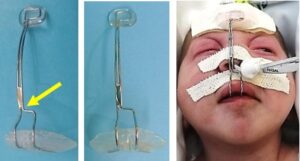
Figure 3: Baton obturator, as in Fig. 2, with a modified facial retention to accommodate naso-tracheal tube for O2 supply and/or a naso-gastric feeding tube.
Obturator- with- extension [OwE] (hPsP)
The obturator-with-extension (OwE), a standard palatal obturator rooted in the McNeil design, incorporates an additional posterior (dorsal) acrylic extension that extends partially into the cleft defect of the soft palate (Fig. 4) [10,11]. Primarily serving as a breathing and feeding plate for a neonate born with both a hard and soft palate cleft (hPsP) (Fig. 5). This slight acrylic extension serves to reducing the open length of the cleft, temporarily obturating the hard palate as its naso-palatal opening extends into the soft palate cleft. The primary goal and significance of the OwE lie in establishing a temporary artificial palate to facilitate normal breathing, maintaining the tongue away from the cleft defect and to facilitate normal suctioning and feeding. With a hPsP-cleft fluids are entering through the cleft into the nasal cavity and subsequently exiting through the nostrils which can be avoided with an OwE device. Neonates born with cleft anomalies commonly experience feeding difficulties and nasal regurgitation, underscoring the critical need for prompt application of a suitable obturpaedic device to regulate fluid flow and feeding [4,5].
The extension integrated into the OwE at the soft palate cleft serves to prevent the tongue from a ‘backwards’ or posteriorly or postero-inferiorly positioning, thereby reducing obstruction of the naso-oropharynx. By promoting an antero-inferiorly position of the tongue, the OwE discourages the tongue from resting in the posterior part of the cleft defect. Consequently, keeping the tongue out of the cleft defect manifest, due to this device, fosters a more natural medio-lateral palatal growth adjacent to the cleft defect, thereby narrowing the width of the cleft. As the cleft growth becomes partially smaller in its dimension, this crucial presurgical intervention mitigates the extend of surgical repair required. Additionally, the presence of the OwE forces the tongue into a more natural oral environment, potentially stimulating further anterior mandibular development – an indirect yet notable mandibular growth stimulus.
Subsequently, the OwE can then be utilised as a follow-up treatment device, after the use of a Baton obturator (Fig. 1-3), contingent upon successful treatment outcome of the glossoptosis and feeding issues. Notably, the exchange of the oro-facial Baton device with an OwE in a Pierre Robin sequence infant is only viable once sufficient peri-oral muscles and favourable tongue tensile strength have developed in the infant.
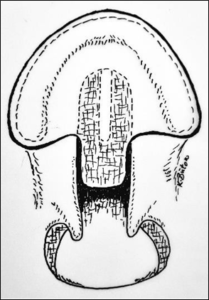
Figure 4: Drawing – Position of the OwE.

Figure 5: Cleft hard and soft palate – OwE in situ, before nasogastric tube removal.
Functional Jaw-Orthognathic Suction and Drinking Plate (FJO) (u+bCLAP)
The Functional Jaw-Orthognathic Suction and Drinking plate (FJO) is a specialized manipulative obturator which serves multiple functions, including that of an OwE (Fig. 6), as well as to continuously mould the displaced and deformed alveolar arches in a unilateral or bilateral CLAP [2,3].
Functionally, the FJO device acts as an artificial palate, effectively separating the oral and nasal cavities. However, it extends anteriorly into the alveolar cleft, allowing the infant’s tongue to generate sufficient pressure against this artificial palate to establish a seal between the oral and nasal cavities. This enables the infant to suck, swallow and feed more comfortably. Moreover, the FJO device is specifically designed to manipulate, align and stimulate continuous growth and positioning of alveolar arches (Figs. 7,8) [12]. Its primary objective is to correct the disparate alveolar arch segments, ultimately aiming to achieve an ideal gothic arch, closely resembling a normal horseshoe-shaped alveolar ridge. This correction is pursued prior to the initiation of reconstructive surgeries, targeting the hard palate defect, anterior nasal floor and cleft lip defect (cheiloplasty). Additionally, this manipulation of the orofacial complex promotes growth enhancement. Consequently, the utilization of the FJO device yields a synergetic advantage, encompassing both the functionalities of the OwE and the manipulation of the alveolar segment growth and moulding. During FJO treatment, concurrent narrowing and positioning of the cleft lip segments can be performed for unilateral and bilateral CLAP cases. These lip segments undergo moulding procedures during the obturpaedic treatment phase (see point 6). Furthermore, if necessary, the FJO can be adapted into a naso-alveolar moulding device (NAM1), to address nasal ala deformities at the cleft side. In essence, the FJO device offers a combined benefit by incorporating the functionalities of both the OwE and the manipulation of alveolar segments, thereby optimizing treatment outcomes in infants with CLAP conditions.
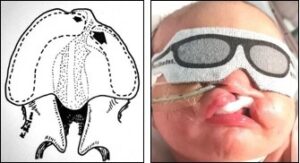
Figure 6: Line-drawings of the FJO device for alveolar segment moulding.
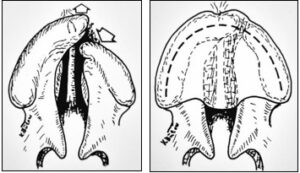
Figure 7: Unilateral CLAP, with Functional Jaw-Orthognathic Suction and Drinking plate (FJO), pre- and post-treatment.
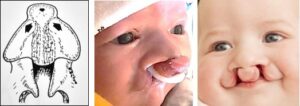
Figure 8: Bilateral CLAP, with Functional Jaw-Orthognathic Suction and Drinking plate (FJO) with lip moulding.
Naso-Alveolar Moulding (NAM1) (u+bCLA, u+bCLAP)
The Naso-alveolar moulding (NAM1), also referred to as a Presurgical NAM (PNAM) device, is indicated for u+bCLA and u+bCLAP cases [13]. In instances of uCLA, the absence of a specific intra-oral device for palate moulding, necessitates the application of NAM1 solely to the alveolar arch, aiming to achieve an optimal gothic or horse-shoe appearance of the alveolar segments. Concurrently, an extension ‘arm’ is employed to mould the nasal ala on the cleft side.
For the uCLAP, the NAM1 device is configured as a FJO device with an extended ‘arm’ for moulding the nasal ala deformity on the cleft side (Fig. 9). Thus, the NAM1 encompasses two distinct moulding functions within a single device: one for rotating and aligning the alveolar segment and the other for the nasal ala on the cleft side. Ideally, NAM1 is initiated shortly after birth, typically within 1-2 weeks post birth, but before 6 weeks of age [14]. This technique in general mitigates the severity of cleft deformity, approximates and rotates the alveolar segments, decreases the nasal base width at the cleft and aims to correct the present anti-convex deformity to achieve symmetry of the nasal cartridges. Consequently, it facilitates conditions for less complex surgery with minimal tissue tension.
In cases of bilateral cleft anomaly (bCLAP), NAM1 may be utilised for partial stretching of the atrophic columella (Fig. 10), potentially reducing the necessity for extensive surgical reconstruction during the columella creation [15].

Figure 9: NAM1 appliances for the unilateral cleft anomaly.
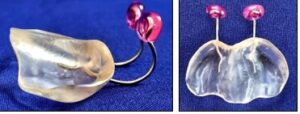
Figure 10: NAM1 appliances for the bilateral cleft anomaly.
Pre-maxilla Positioning and Moulding (bCLA, bCLAP)
The Pre-maxilla Positioning and Moulding technique is particularly relevant for cases of bilateral CLA and CLAP where the premaxilla often presents with pronounced protrusion immediately after birth, accompanied by a supero-horizontal positioning of the prolabium. A specialized extended lip taping procedure (Fig. 11) supplemented by posteriorly applied force on the cheeks, can be used at the prolabium-premaxilla complex to address this presentation (see section 6).
Alternatively, a headgear appliance (Fig. 12) may be deemed necessary to apply greater forces in the treatment of this highly protrusive prolabium-premaxilla midfacial segment. The premaxilla, being the central alveolar segment, requires pressure to be exerted on the pedicled nasal-septum-vomer part to achieve positioning of this midfacial structure between the lateral alveolar segments. Commencement of the treatment immediately after birth is paramount, with optimal outcomes achieved within the first ±5 weeks after birth, facilitating the attainment of a more ideal gothic arch appearance through pressure exerted on the very immature cartilage-bony pedicel. Early intervention significantly reduces the complexity of surgical reconstruction for the bilateral cleft lip and the bilateral anterior nasal floor regions. Moreover, the need for posterior vomer bone resection, situated posterior to the growth centre, i.e. posterior to the nasal septum-vomer bone junction, is obviated by posterior prolabium-premaxilla positioning. This approach also mitigates the risk of long-term midfacial dysgnathial growth defect in the majority of bCLAP-patients.

Figure 11: Posteriorly positioned extensive lip taping for premaxilla positioning.

Figure 12: Headgear treatment for premaxilla positioning (presurgical result).
Lip Moulding (u+bCL, u+bCLA, u+bCLAP)
The lip moulding technique, also referred to as lip taping [16], holds significant importance as an aesthetic obturpaedic intervention. It can be utilised with the functional jaw-orthognathic suction and drinking plate (FJO) or with NAM1 or with NAM2. This technique is particularly valuable for addressing wide and extremely wide unilateral cleft lip defects (uCL, uCLA, uCLAP) by manipulating the flaring lip segments to achieve a more favorable alignment (Fig. 13,14). Additionally, it serves to reposition the often horizontally protruding prolabium in cases of bilateral cleft lip defects (bCL, bCLA, bCLAP) into a more vertical favorable orientation (Fig. 15). In bilateral anomalies, there is often a dual effect where in the premaxilla can be partially moved posteriorly towards the lateral alveolar segments, while simultaneously rotating the prolabium into a more vertical position. Consequently, moulding and positioning can be concurrently achieved, significantly reducing the complexity of the bilateral facial cleft deformity during the reconstructive surgery. Various materials may be employed for this technique, including standard tapes, special elastic tape and baselined skin covers. Given its technique-sensitive nature, it is imperative that the taping procedure be executed correctly and thoroughly taught to the parent to ensure optimal results. While the headgear treatment, although technique demanding and sensitive, may pose challenges for the parents to manage. Notwithstanding, the headgear treatment is an intensive short treatment period following the premaxilla positioning and allows for the continuation of lip taping as a retention prolabium-premaxilla taping. In practice, this manipulation of the cleft lip segments should commence immediately after birth and should continue until the time of cheiloplasty.

Figure 13: Unilateral CLAP with cleft lip moulding.

Figure 14: Unilateral CLAP with cleft lip moulding.

Figure 15: Bilateral CLAP with cleft lip moulding.
Naso-Ala Moulding (NAM2) (u+bCL)
The NAM2 appliance also refer to as nasal conformer, serves as a naso-facial device designed to shape and manipulate the anti-convex skin-alar area of the ‘cleft’ nose, at the side of the cleft anomaly, adjacent to the columella [2]. Positioned from the nose towards the frontal facial area, it is anchored using a taping technique. The appearance of this deformity is often more pronounced in cases of wider cleft lip or cleft lip-alveolus anomalies. Manifesting as displacements of the nasal alar sill towards the cheek area and an expanded nasal floor, the nasal ala often presents a well- developed anti-convex deformity with internal cartilage more outwards-rotation. Treatment with the NAM2 device may mitigate this anti-convex alar deformity to some extent, thereby promoting a more favorable pro-convex alar configuration conducive to the surgical reconstruction of the lip-nose structure. Consequently, it contributes to enhancing the long-term aesthetic outcome of the nose. Unlike other obturpaedic devices, the NAM2 device does not require attachment to an intra-oral appliance, but can be used in conjunction with other obturpaedic devices (Fig. 16).

Figure 16: NAM2 device.
Conclusion
The utilization of one or more obturpaedic treatment techniques represents a significant advancement in the care of neonates born with facial cleft anomalies. Formerly referred to as ‘Primary or Presurgical Orthopaedic’ treatment, this approach now encompasses a wider array of techniques tailored to address the diverse spectrum of cleft anomalies. Unlike the previous description, which often focused on maxillary arch alignment with pinned coaxial screw appliances, obturpaedic treatment recognizes the importance of employing various devices to suit the specific cleft anomaly.
Initiating obturpaedic treatment immediately after birth and continuing until the first surgical intervention has proven to be crucial in achieving successful outcomes. This period of treatment often involves the use of multiple devices in one patient, reflecting the complexity and individualized nature of cleft anomalies. From facial-aesthetic moulding to functional alveolar arch moulding, obturpaedic techniques encompass a wide range of interventions aimed at improving facial and oral deformities.
Moreover, obturpaedics treatment has been shown to significantly reduce the complexity of infant cleft surgery, by promoting the development of an improved gothic or horse-shoe alveolar arch, lip and nasal alignments. By addressing these deformities early on, obturpaedic treatment plays a vital role in optimizing long-term outcomes and improving the overall quality of life for infants with facial cleft anomalies. As such, further research and clinical innovation in this field are warranted to continue advancing the care and treatment of affected neonates.
Conflict of Interests
The authors have no conflict of interest to declare.
Conflict of Interests
The authors have no conflict of interest to declare.
Language Evaluation
A Wolmarans.
Confirmation of Patient’s or Parent’s Permission
Patient/parent’s permission obtained.
References
- Prinsloo R, Eroğlu Ç, Bütow KW. Cleft treatment: obturpaedics, orthopaeddontics, orthodontics – important concepts. J Dent Health Oral Res. 2024;5(1):1-5.
- Bütow K, Zwahlen R. Cleft ultimate treatment. Reach Publishers’ Services, Wandsbeck, South Africa. 2016;2:47-55.
- Bütow K, Zwahlen R. Primary presurgical treatment for cleft nose, lip, dentoalveolar arches & palate. Open Access Atlas Otolaryngol Head Neck Operat Surg. 2020. [Last accessed on: April 14, 2024]
- Rathee M. Single visit feeding appliance for 1-day-old neonate with cleft palate using safe dental putty-gauze hybrid impression technique for maxillary impression. J Surg Tech Case Rep. 2015;79(1):7-11.
- Visser EE, Krüger EE, Margaretha A, Kritzinger AM. Feeding difficulties in infants with unrepaired cleft lip and palate and HIV-exposure. Afr Health Sci. 2018;18(4):1098-108.
- Savitha S. An unusual type of sucking habit in a patient with cleft lip and palate. J Indian Soc Pedod Prev Dent. 2009;27(4):260-2.
- Dehghan F, Haerian BS, Muniandy S, Yusof A, Dragoo JL, Salleh N. The effect of relaxin on the musculoskeletal system. Scan J Med Sci Sport. 2014;24(4):e220-29.
- Pielou WD. Non-surgical management of Pierre Robin syndrome. Arch Dis Child. 1967;42:20-3.
- Poets CF, Maas C, Buchenau W, Arand J, Vierzig A, Müller-Hagedorn S. Multicenter study on the effectiveness of the pre-epiglottic baton plate for airway obstruction and feeding problems in Robin sequence. Orphanet J Rare Dis. 2017;12:1-6.
- McNeil CK. Orthodontic procedures in treatment of congenital cleft palate. Dent Rec. 1950;70:126-32.
- Jones JE, Handerson L, Avery DR. Use of a feeding obturator for infants with severe cleft lip and palate. Spec Care Dent. 1982;2(3):116-20.
- Dawjee SM, Dawjee MM. Introducing the Alveolar Moulding Obturator (AMO): an appliance for the early management of cleft palate neonates. SAfr Dent J. 2019;74:141-3.
- Grayson BH, Cutting CB. Presurgical nasoalveolar orthopedic molding in primary correction of the nose, lip and alveolus of infants born with unilateral and bilateral clefts. Cleft Palate Craniofac J. 2001;38(3):193-8.
- Grayson BH, Garfinkle JS. Early cleft management: the case for nasoalveolar molding. Am J Orthod Dentofacial Orthop. 2014;145(2):134-42.
- Kapadia H, Olson D, Tse R, Susaria SM. Nasoalveolar molding for unilateral and bilateral cleft lip repair. Oral Maxillofac Surg Clin North Am. 2020;32(2):197-204.
- Pool R, Farnworth TK. Preoperative taping in the cleft lip. Ann Plast Surg. 1994;32(2):234-49.
Article Type
Review Article
Publication History
Received Date: 21-03-2024
Accepted Date: 14-04-2024
Published Date: 22-04-2024
Copyright© 2024 by Prinsloo R, et al. All rights reserved. This is an open access article distributed under the terms of the Creative Commons Attribution License, which permits unrestricted use, distribution, and reproduction in any medium, provided the original author and source are credited.
Citation: Prinsloo R, et al. Obturpaedics in Cleft Treatment. J Dental Health Oral Res. 2024;5(1):1-10.

Figure 1: Primary Baton Obturator with facial retention and dorsal (posterior) acrylic extension.

Figure 2: Baton obturator, with placement of a dorsal (posterior) acrylic extension, with modified bendable wire attached.

Figure 3: Baton obturator, as in Fig. 2, with a modified facial retention to accommodate naso-tracheal tube for O2 supply and/or a naso-gastric feeding tube.

Figure 4: Drawing – Position of the OwE.

Figure 5: Cleft hard and soft palate – OwE in situ, before nasogastric tube removal.

Figure 6: Line-drawings of the FJO device for alveolar segment moulding.

Figure 7: Unilateral CLAP, with Functional Jaw-Orthognathic Suction and Drinking plate (FJO), pre- and post-treatment.

Figure 8: Bilateral CLAP, with Functional Jaw-Orthognathic Suction and Drinking plate (FJO) with lip moulding.

Figure 9: NAM1 appliances for the unilateral cleft anomaly.

Figure 10: NAM1 appliances for the bilateral cleft anomaly.

Figure 11: Posteriorly positioned extensive lip taping for premaxilla positioning. 
Figure 12: Headgear treatment for premaxilla positioning (presurgical result).

Figure 13: Unilateral CLAP with cleft lip moulding.

Figure 14: Unilateral CLAP with cleft lip moulding.

Figure 15: Bilateral CLAP with cleft lip moulding.

Figure 16: NAM2 device.


